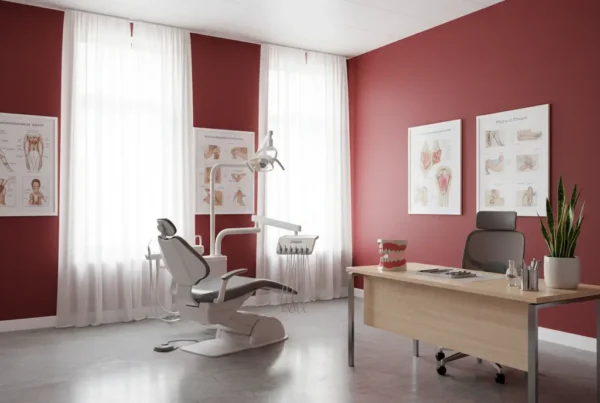Arthritis in the temporomandibular joint (TMJ) poses unique challenges that require attention. Unlike arthritis in limbs, TMJ arthritis can often go unnoticed until it disrupts daily life. The condition calls for specific awareness and care to prevent long-term complications and maintain oral health.
The first critical aspect of TMJ arthritis is its stealthy onset. Many people may not associate their jaw discomfort with arthritis, attributing it to temporary stress or bite issues. However, without proper diagnosis, this can evolve into a chronic condition. For example, what starts as mild stiffness in the morning can become a persistent difficulty in chewing or yawning, disrupting meals and social interactions.
A second key point is the TMJ’s central role in oral mechanics. Unlike more peripheral joints, the TMJ is integral to essential daily functions such as eating, talking, and expressing emotions. Arthritis here can, therefore, severely impact one’s quality of life. Think of the struggle someone might face trying to enjoy their favorite meal or simply joining a conversation with friends when every jaw movement is painful.
Understanding Arthritis in the Temporomandibular Joint (TMJ)
Arthritis in the temporomandibular joint (TMJ) is a complex condition that demands careful diagnosis. Unlike arthritis in more recognized joints, TMJ arthritis can often go undetected due to its subtlety and the specificity of its symptoms.
The first point of focus is the symptoms’ similarity to other joint inflammations. Patients might experience pain and stiffness, but because the TMJ is less commonly associated with arthritis, these symptoms can be mistaken for less serious concerns. An individual might, for example, wake up with a sore jaw and assume it’s due to grinding teeth at night, not realizing that this could be a sign of something more serious like arthritis.
The second point addresses the diagnostic process. Since symptoms alone can be misleading, combining a detailed patient history with a complete physical exam is crucial. A doctor might ask about the duration and nature of the symptoms and look for signs of wear or injury in the jaw during an exam.
The third critical aspect is the role of imaging. X-rays and MRIs can reveal changes in the joint that are not otherwise apparent. These might include diminished joint space or bone erosion. These images are critical for ensuring a correct diagnosis, guiding further testing, and determining the best course of treatment for TMJ arthritis.
Types of Arthritis Impacting the TMJ
Several distinct types of arthritis can affect the TMJ, each demanding a unique approach for management and treatment. Understanding these differences is critical for clinicians to provide accurate care and for patients to manage expectations.
Osteoarthritis of the TMJ originates from the gradual wear and tear of the joint. It often manifests as a slow loss of cartilage, the cushioning tissue between bones, leading to eventual bone rubbing and deterioration. A patient might notice this as increasing discomfort while chewing or an audible creaking sound during jaw movement.
Rheumatoid arthritis, in contrast, involves the body’s immune system mistakenly attacking the synovial membrane, which lubricates and protects the joint. This autoimmune reaction results in inflammation and can cause more rapid and severe joint damage than osteoarthritis. Symptoms could range from swelling and pronounced pain to a noticeable decrease in jaw movement.
The necessity to differentiate these types underlines the importance of specialized tests and evaluations. For instance, blood tests can detect markers indicating rheumatoid arthritis, while X-rays might show the extent of physical damage from osteoarthritis, guiding healthcare professionals to tailor treatment specifically to the type of arthritis present.
Symptoms and Diagnosis of TMJ Arthritis
Jaw pain, tenderness, and stiffness signal the possibility of TMJ arthritis but discerning it from other ailments requires careful evaluation. Correctly diagnosing this form of arthritis is the cornerstone of effective treatment, whether it’s medication, physical therapy, or surgery.
Experience of discomfort is the most immediate sign of TMJ arthritis. Patients may report a nagging ache that exacerbates with jaw movement – a potential red flag that distinguishes it from transient pain caused by, say, a dental procedure. Consistent or worsening pain, particularly with jaw function, should prompt a closer look for arthritis.
Physical signs during clinical exams are the next indicators. A dentist may notice unusual jaw sounds, like clicking or grating, during routine movements. Additionally, the jaw may not open as fully or smoothly as expected. These physical symptoms, along with reported pain, build a stronger case for TMJ arthritis.
Diagnostic imaging completes the triad of detection. If arthritis is suspected, an X-ray or an MRI can confirm the presence of joint damage or inflammation that’s not detectable through a physical exam alone. This evidence solidifies the diagnosis, providing a clear path to the most appropriate treatment options for the patient.

Impacts of TMJ Arthritis on Quality of Life
TMJ arthritis reaches beyond mere physical discomfort, affecting basic functions such as eating and speaking, which in turn can have profound ramifications on a person’s well-being. Early and thorough management is crucial in preserving an individual’s daily life quality.
Eating, an everyday pleasure for many, can become an ordeal for those with TMJ arthritis. With limited jaw movement and persistent pain, patients may find themselves avoiding certain foods or dreading meals that others take for granted. The joy of savoring a crunchy apple or a tough steak could turn into a painful challenge, unnecessarily restricting their diet and enjoyment.
Communication, another cornerstone of daily life, is often compromised by TMJ arthritis as the pain can hamper articulate speech. Simple conversations may become strenuous, forcing individuals to speak less or avoid social interaction, potentially leading to isolation and impacting emotional health.
The social implications should not be underestimated, as TMJ arthritis can be an invisible barrier to intimacy and professional interactions. The avoidance of a smile, a grimace of pain mistaken for displeasure, or not engaging in social dining can all inadvertently create misunderstandings and distance in relationships, underscoring the importance of addressing this condition promptly.
Treatment Approaches for TMJ Arthritis
Treating TMJ arthritis typically starts with methods designed to minimize discomfort and prevent further joint damage. These early interventions can often alleviate symptoms and preserve jaw function without the need for more aggressive treatments.
Medication plays a key role in combating the pain and inflammation of TMJ arthritis. Over-the-counter pain relievers like ibuprofen not only reduce discomfort but also tackle the inflammation that is at the root of the issue. Prescribed anti-inflammatory drugs might be considered when over-the-counter options do not suffice, providing a stronger defense against pain and swelling.
Alongside medication, targeted jaw exercises serve to maintain mobility in the TMJ. These gentle stretches and movements help keep the jaw flexible, aiming to reduce stiffness and improve the range of motion. This can be particularly helpful in the morning when the jaw may feel especially tight or sore after a night of rest.
If these initial treatments do not provide adequate relief, the strategy may shift to more potent options. This could mean exploring prescription painkillers that offer more significant pain control or considering surgical options to repair joint damage and restore function, which become viable when the condition progresses past what medication and therapy can address.
Book Your Consultation Today!
Dr. Bethaney B. Brenner DMD
8 Milford St, Burlington, CT 06013
FAQs
Can TMJ arthritis be reversed with early treatment?
While arthritis itself can’t be reversed, early intervention can significantly slow its progression, reduce symptoms, and help maintain joint function.
Is surgery always necessary for advanced TMJ arthritis?
Not always. Many patients manage well with medication, physical therapy, and lifestyle changes. Surgery is typically considered only when conservative treatments fail.
How can I protect my TMJ if I’m at risk?
Maintain regular dental check-ups, manage stress, avoid clenching or grinding, and seek early treatment if jaw pain or stiffness arises.





